Handguide for Christian Time Travelers
How to compress time, become gods, and understand our end-goal as Christians.
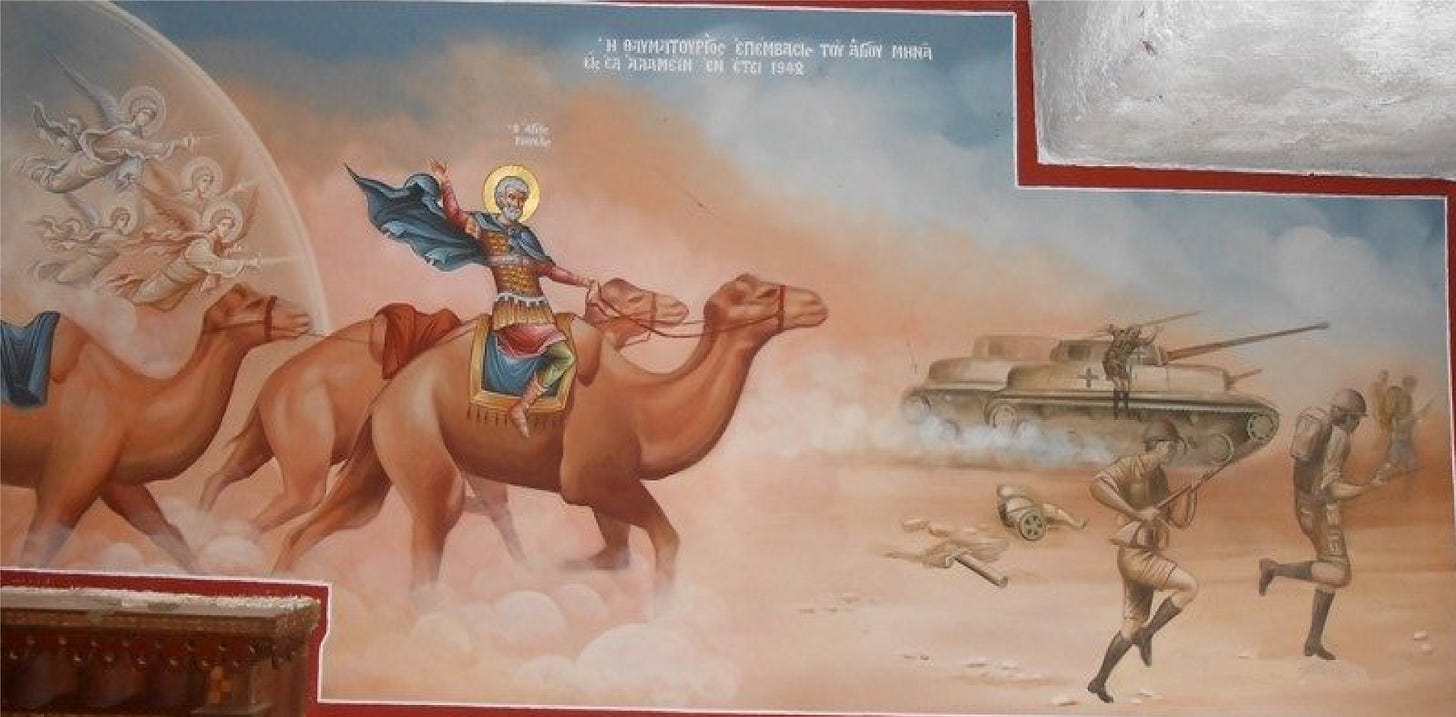
Over the years, I’ve noticed a peculiar pattern that occurs within the miraculous postmortem appearances of Orthodox Christian saints.
There are countless accounts of saints miraculously appearing to people after the saint has died, just like how Christ appeared to the apostles after His death. Often times, these saints appear to them in the flesh. They aren’t visions or phantoms that appear to them, they have physical bodies.
This is not merely an ancient phenomena that can be written off as myth or legend, we have accounts of this happening in the modern day. In 1996, a group of Greek children went to the holy site of Mount Athos to visit the monks who lived there. While they were up there, St. Porphyrios approached them and greeted them. The children didn’t know him, but they quickly realized they were speaking to a holy man.
One of the boys in the group had a mother who was terribly sick with cancer, her prognosis was not looking good. Here is an account from the child’s father:
All the children were sitting below a tree, and speaking and laughing, when straightaway a monk approached them. They stood up and kissed his hand, and the Elder began to say each child’s name. As you could imagine, the children were surprised that he knew their names and families. To my son he said: ‘Tell your mother to not have surgery, she’s all better!’
‘You know her?’ he asked.
‘I know her, I know all of you!’
‘Who are you?’ they asked.
‘I am Elder Porphyrios’ he said, and he left.During their return from the Holy Mountain they stopped in Ouranoupolis at a drug store to buy aspirin, for they were seasick and nauseous. Entering the pharmacy, they saw a photograph of Elder Porphyrios and said: “There is the Elder Porphyrios we saw on the Holy Mountain!”
As soon as the pharmacist saw this, he was confused. “I’m sorry, children, you saw this Elder on Mount Athos? Are you sure?”
‘Of course we’re sure,’ they replied, ‘we all talked with him. And of course we were surprised that he knew our names and our families. When we asked him who he was, he replied that he was Elder Porphyrios.’
‘Children, I’m sure that you saw him, but… Don’t be alarmed when I tell you… The Elder has been dead for five years!’
The children were shocked! ‘Impossible!’ they said, ‘we just were speaking to him!’
Needless to say, the boy’s mother fully recovered from her cancer. When she went to the doctor for a check-up, they said it disappeared as if she never had it in the first place.
Note how each one of the boy’s kissed the elder’s hand after he gave them a blessing. They physically touched him. He was not a ghost or a vision.
This is not the peculiar part to me. Christ Himself physically resurrected and appeared in His body to the apostles; it only makes sense that those who dedicate their lives to achieving His likeness will do the same thing after they die.
The peculiar part is this: even though these saints are physically appearing to people, their dead bodies are simultaneously still on the earth as well.
How can this be? How can someone be physically alive and physically dead at the same time?
The conclusion I have come to: by becoming one with Christ in this life, we gain the ability to time travel once we die.
Time Travel: Fiction vs. Reality
When I say the words “time travel”, I am not talking about it in the typical science fiction sense we are all familiar with in the modern world.
In most sci-fi stories (which are always written under atheistic and materialistic presuppositions), time travel is facilitated by some sort of portal. It’s almost always a distant wormhole that opens up a rift in spacetime, or it is a man-made time machine which is essentially the artificial version of the same concept.
These methods of time travel within fiction operate on the assumption that time is a straight line which is continually moving forward. When the characters go through this portal, it is as if they are simply being transported from their current location to a different point on this line. Their bodies are teleported from their physical location in the ‘present’ and are taken into an event in the ‘past’ or ‘future’.
This opens up all sort of metaphysical quandaries surrounding the implicit paradoxes of this method of time travel. Many of these stories involve someone traveling backwards in time from the present and changing something in the past, thus causing events to unfold differently in the future. This begs the question: how is this possible if time is simply a single straight line? Suddenly, we have to start introducing the concepts of multiple timelines, dimensions, or universes in order to explain this.
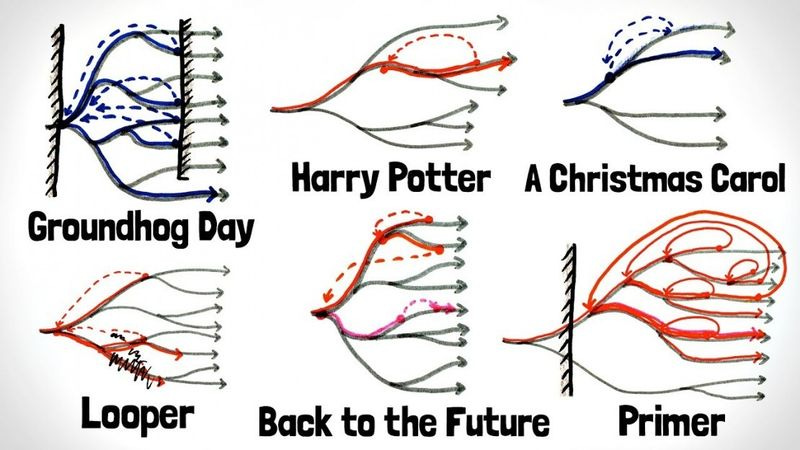
Of course, all of these explanations are figments of the imagination. As much as science-worshiping atheists want to cope, there is no solid scientific evidence at all for the multiverse.
It makes for a good story, but in real life there are no such things as ‘multiple timelines’ and there is only one universe.
Sorry to all the Rick and Morty fans out there who might be reading this.
Re-conceptualizing Time
So what exactly am I talking about here? To understand real time travel, we have to re-conceptualize how time actually works in the first place. Time is not an arrow moving forward, it is a cone pointing upward.
The bottom of the cone is the cyclical flux of time in the material realm. As we travel up the cone, time becomes more and more compressed until we reach the top. The top of the cone is a singularity containing the totality of time within itself. Past, present and future are all one within the top point of this cone.
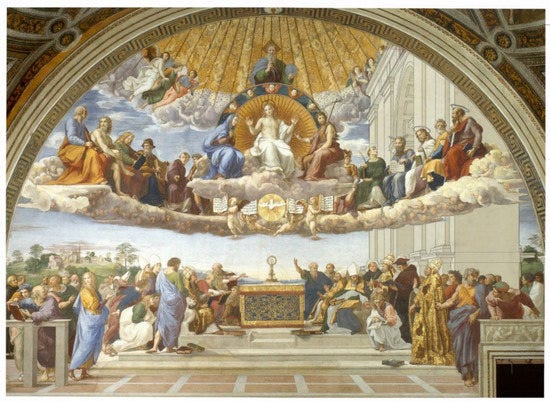
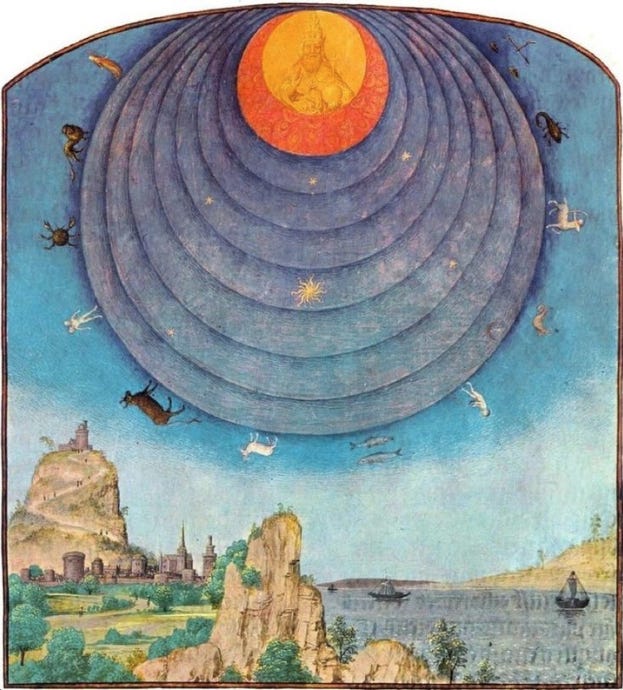
Many people think that the word ‘eternity’ just means ‘unlimited time’. We hear this word used like this all the time: “I was at the DMV and I had to wait for an eternity to get my driver’s license.”
There is certainly a bit of truth to this usage of the word because eternity is unending. However, that is not the full picture. Time is not a straight line, therefore eternity is not merely an infinite amount of time forever extending into the future.
Eternity is the totality of time. It is a closed circuit. Eternity is unending because eternity is the compression of both the beginning and the end. As St. Maximus explains to us, the beginning and end of something are a singular thing:
It is evident that every person who participates in virtue as a matter of habit unquestionably participates in God, the substance of virtues. Whoever by his choices cultivates the good natural seed shows the end to be the same as the beginning and the beginning to be the same as the end. Indeed the beginning and the end are one.
As a result, he is in genuine harmony with God, since the goal of every thing is given in its beginning and the end of every thing is given in its ultimate goal. As to the beginning, in addition to receiving being itself, one receives the natural good by participation: as to the end, one zealously traverses one’s course toward the beginning and source without deviation by means of one’s good will and choice. And through this course one becomes God, being made God by God. To the inherent goodness of the image of God is added the likeness of God, acquired by practice of virtue and the exercise of the will. The inclination to ascend and to see one’s proper beginning was implanted in man by nature.
- St. Maximus the Confessor, “On the Cosmic Mystery of Christ” pg. 59
This is why Christ tells us “I am Alpha and Omega, the beginning and the end, the first and the last.” He is the beginning of all things because He created all things, He is the end of all things because all things will be reconciled back to Him. The more we become like God through uniting ourselves to Christ, who is the bridge between divinity and humanity, the more time begins to compress and the more clearly we begin to see the beginning and end of all things.
We see this conic structure in the icon of the Transfiguration of Christ. At the base of the cone, we have the ‘fullness of time.’ We see the apostles with Christ before, during and after and the transfiguration; at this level we see the past, present and future as separate things. As we move up to the second level, we see Moses and Elijah speaking to Christ. Here we see time start to ‘compress’. Elijah and Moses both went to the top of a mountain to speak to God; this level reveals how both of those occasions have been compressed into a single meta-event. At the top, we have Christ who has revealed Himself to be the source of time and space.
All of this takes place on top of a mountain, which itself is a conic shape.
Crash Course on Teleological Objects
So why is time shaped like a cone? And what exactly do I mean when I say time becomes more “compressed”?
As I was writing this article, I realized that this conceptualization of time as a cone is extremely similar to descriptions found within my friend
‘s work. It seems we have both come to similar conclusions in our own ways independent of each other, which leads me to further believe in the veracity of both. The following is my attempt to synthesize his work with my understanding of Orthodox theology:The red line in this diagram (referred to by Gryphon as “the Labytinth”) represents being stuck in a lower level of cognition that can only perceive time as linear. In this cognitive state, there is nothing that transcends time or space, there is only an endless flux of cause and effect. From this point of view, there is only the present moment.
The prism represents what Gryphon and
refer to as a “teleological object.” It is difficult to describe what exactly a teleological object is; it is an amalgamation of several things spread across space and time, yet it simultaneously transcends all these things that represent it.The way I understand it: it is essentially a heavenly ‘magnet’ or ‘gravity well’ that pulls physical processes together towards a telos.
The telos of something, which is the end-state towards which it is heading, necessarily informs the behavior of that thing in the present moment. Often times when we need to find our footing in the present, we ask ourselves “why am I even doing this?” This requires us to retrace our steps back to the beginning in order to find the reason why we started down our current path. Once we reach back to the beginning, we start to “remember the future” and look towards the telos which began to pull us along our current path. This means that the future can affect the present.
A teleological object is essentially a transcendental compression which gives that entire process its structure and cohesion. It is the heavenly ‘glue’ that uses meaning and purpose as its adhesive. It allows things to sustain their cohesiveness throughout time and not fall apart into chaotic flux.
The teleological object, which transcends time and space, casts a ‘shadow’ onto time and space which Gryphon refers to as a “constellation”. In the diagram Gryphon made, they are the dots along the labyrinth which lead up to the prism.
Constellation is what happens when we filter out the noise of the physical stimuli we experience and construct a long-term narrative based on relevant sense data presented to us throughout time.
Here is an example of how this framework applies to Orthodox theology:
The Eucharist is the Body and Blood of Christ and it is also bread and wine. An atheist who is in the labyrinth will only see bread and wine in front of them, failing to see how this bread and wine maintains a transcendent identity throughout time and space. An Orthodox Christian will see the Eucharist as a teleological object. Christ Himself is fully present within this bread and wine, yet He also transcends this particular instantiation of the bread and wine. The Eucharist, as a teleological object, is seen within every single instance of bread and wine which has been offered to God during the liturgy across time and space.
To reference Gryphon’s original diagram: the red line is time and space. The dots which form a constellation along the red line are the multiple instances of bread and wine being offered to God across time and space. The prism above the red line which is compiled of these numerous dots is the Body and Blood of Christ.
This is why in the Orthodox Church, the Eucharist is referred to as the “Mystical Supper.” As St. John Chrysostom tells us, when we go to take communion at Church, we are sitting down with the apostles at the very same table where Christ instituted the Eucharist:
But it is time then to approach that fearful table. Therefore, let us all approach with fitting discretion and sobriety. And let no one be Judas any longer; let no one be wicked; let no one possess venom, bearing one thing in his mouth and another in his mind. Christ is present, and He Who set in order that meal of old also sets this one in order now. For it is not a man who causes the elements that are set forth to become the Body and Blood of Christ, but Christ Himself, Who was crucified for our sake. Fulfilling the figure, the priest stands and utters the words. But the power and the grace belong to God. This is My Body, the priest says. These words transform the elements set forth; and just as the words "Increase and multiply and fill the earth" (Gen. 1:28) were said once, but throughout all time they give our nature the power to beget children, so also from that time until now and until His Coming, these words that were said once accomplish the perfect Sacrifice on each altar table in the churches.
- St. John Chrysostom, Homily for Holy Thursday

Compressing the Sands of Time
The “labyrinth” is what I would describe as the “bottom of the time-cone.”
The bottom of the time-cone is the “fullness of time”. It contains the practically infinite minutia of details which can be found at present moment. Just like the sands of the earth, every moment in time holds countless facts to be accounted for in any given moment. Each detail found within this present moment can be thought of as individual grains of sand passing through an hourglass.
After I wrote this analogy of an hourglass, I actually discovered that some theoretical physicists already depict the nature of light waves moving through spacetime in the shape of an hourglass within a cone:
The “past light cone” represents the sands of time which have already fallen and settled. There is no going backwards in time, we can not make the sands go back up through the hourglass.
The “future light cone” contain the sands which have yet to fall. There are numerous possible futures through which the “world line” can pass, but there is still one singular point at the top of the cone which contains it. Likewise, there are numerous possible ways the sand can fall, but the hourglass will inevitably always run out of sand.
The bottom of the time-cone is like the central bottleneck of an hourglass through which a torrent of sand ceaselessly passes. It is the ever-present moment where potentiality is converted into actuality, where the future concretizes into the past.
Those who are possessed by their fleshly passions are stuck in this middle point of the hourglass, fixating on every individual grain of sand as it passes through their field of consciousness:
I’m hungry and craving a burger, I go to eat the burger, the burger is gone. Now I’m craving a beer, I drink the beer, I get a buzz, the beer is gone. Now I’m horny, I swipe on tinder, I hook up with a girl, she satisfies my urges. Now I’m hungry and craving a burger…
In this context, the ‘labyrinth’ here at the center of the hourglass is what the Orthodox Church would describe as “The World.” Those who are trapped in The World are lost in the maze of all the passions. I talk about this briefly in a previous article I wrote:
So how do we begin to ‘compress’ our experience of time and move up this ‘time-cone’? Like St. Maximus said, someone who acquires virtue to a larger and larger degree unites himself to the substance of God; he starts to see the beginning and the end of things folding into one another. As Christ tells us:
19 “Do not lay up for yourselves treasures on earth, where moth and rust destroy and where thieves break in and steal; 20 but lay up for yourselves treasures in heaven, where neither moth nor rust destroys and where thieves do not break in and steal. 21 For where your treasure is, there your heart will be also.
- Matthew 6:19-21
The human heart is where the nous is located, which is the spiritual center of our soul. It is often referred to as “the eye of the soul” which allows us to directly perceive intellectual and invisible levels of reality without having to think about them.
What most people don’t know is that the word ‘nous’ shares the same etymology as the word ‘intuition’. What is the relationship between the two words? Intuition is how the nous ‘sees’ the world in a spiritual manner; just as the physical eyes use ‘vision’ to see the physical world, the nous uses ‘intuition’ to see the invisible world. Intuition is defined as “the ability to understand something immediately, without the need for conscious reasoning.”
So how does becoming virtuous allow us to see further into the future? It is because virtues are high level, timeless, and immaterial energies. When we fix the intuitive gaze of our nous upon virtue, we are spiritually perceiving things which transcend time and space.
In fact, in Christianity there is a whole class of angels named “the Virtues” who govern these energies and administer them to those individuals who seek them:
The name of the holy Virtues signifies a certain powerful and unshakable virility welling forth into all their Godlike energies; not being weak and feeble for any reception of the divine Illuminations granted to it; mounting upwards in fullness of power to an assimilation with God; never falling away from the Divine Life through its own weakness, but ascending unwaveringly to the superessential Virtue which is the Source of virtue: fashioning itself, as far as it may, in virtue; perfectly turned towards the Source of virtue, and flowing forth providentially to those below it, abundantly filling them with virtue.
- St. Dionysius the Areopagite, On the Celestial Hierarchies
The word “virtue” comes from the Roman word virtus. The Roman word vir translates to ‘man’, so virtus translates to ‘manliness’. This means virtue was understood as excellence, moral perfection, uncompromising strength to do what needs to be done. To be virtuous is to have the strength to become everything one ought to be.
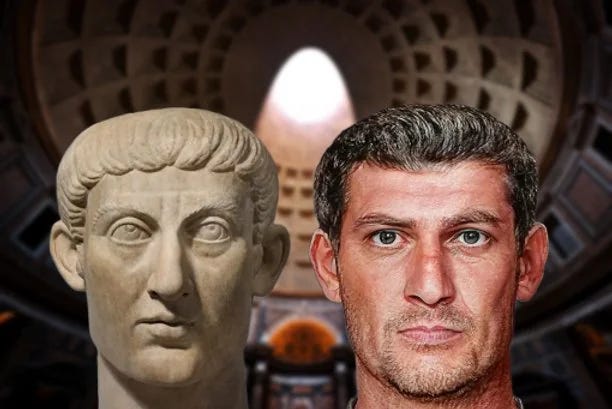
This is the exact opposite of someone who is stuck in the labyrinth of The World. A virtuous man is always looking upwards to heaven and forward into the future. He does not lower his gaze to the things of The World, he is not distracted by the transient pleasures of the flesh.
By training ourselves to live this way, we gradually begin to look beyond the center of the hourglass. We start to tune out a majority of the sands that pass before us and look upwards towards the sands which have yet to fall.
Reorienting the Nous
In a psychedelic experience he had years ago, Gryphon explains the sensation of actively feeling his nous switch from being fixated on lower temporal passions to higher level spiritual goals:
The unspoken implication was that in this spacious, shimmering mode of cognition [higher up the time cone], I was not making my choices for the same reasons, nor even perceiving the same world. I was making choices to set up constellations of synchronistic events in the future which would guide me to things I needed and divert me from hazards.
In this state of mind, I was perceiving potential timelines in every choice I made and choosing accordingly — I was not doing this consciously, but I was doing it.
Conversely, in the other state [at bottom of the cone], I made almost every choice just to scratch an itch. I wanted to be happy more than before, but I felt happiness less strongly and less often.
In both cases I was living in the present, but higher up the pyramid, the present was larger. Time was less real the further up you went.
Wherever our treasure is, there our heart will be also. Whatever we choose to value, this is what our nous will see. Our intuition will be fixated on observing patterns related only to what our heart desires. If we desire the things of the present, we will only see the present. If we desire things of the future, we will begin to see the future.
If our heart desires temporary things of The World which pass away, we will only perceive time in a linear way.
If our heart desires God and eternal things which transcend time, we will begin to perceive reality in a way that transcends time.
When we start to believe that this higher mode of cognition is possible, all of a sudden the incredible long-term prophecies spoken by the prophets of the Old Testament and the saints of the Church start to make sense. These holy men and women aren’t “seeing the future” as if they are fast-forwarding a YouTube video in their imagination to see what happens.
I can’t say exactly how it works, because I am not a holy man who has received the gift of prophecy from God. I’m sure in many instances, God simply gifts them with some sort of vision.
But if I had to guess, I would say that a saint’s level of virtue is so high that they are able to intuitively see how things will unfold solely based on what is happening in the present. Because their nous has such powerful intuitive vision, they are able to ‘tune out’ all the static of The World and ‘tune in’ to a handful of details that indicate events which are to come. Simply by noticing the correct grains of sand passing through the hourglass right now, they are able to see which grains of sand are going to fall several years from now.
We all have moments where this happens to us on a very low-level. How many times have you seen a series of events unfold and you say “I saw that one coming”? What if I told you that this is an ability that God can help you hone?
This is one reason why going to Church is so important: it cleanses and reprograms our nous to cease looking at lower level patterns in The World and start looking at higher level narratives in Heaven. The Church prescribes spiritual tools, such as fasting from certain foods throughout the year, in order to reorient our perceptive framework and detach ourselves from low level temporal things.
In Orthodox theology, we believe there is an eternal heavenly liturgy that we participate in every Sunday when we attend the Divine Liturgy on earth. This means that when you attend one liturgy, you are attending them all.
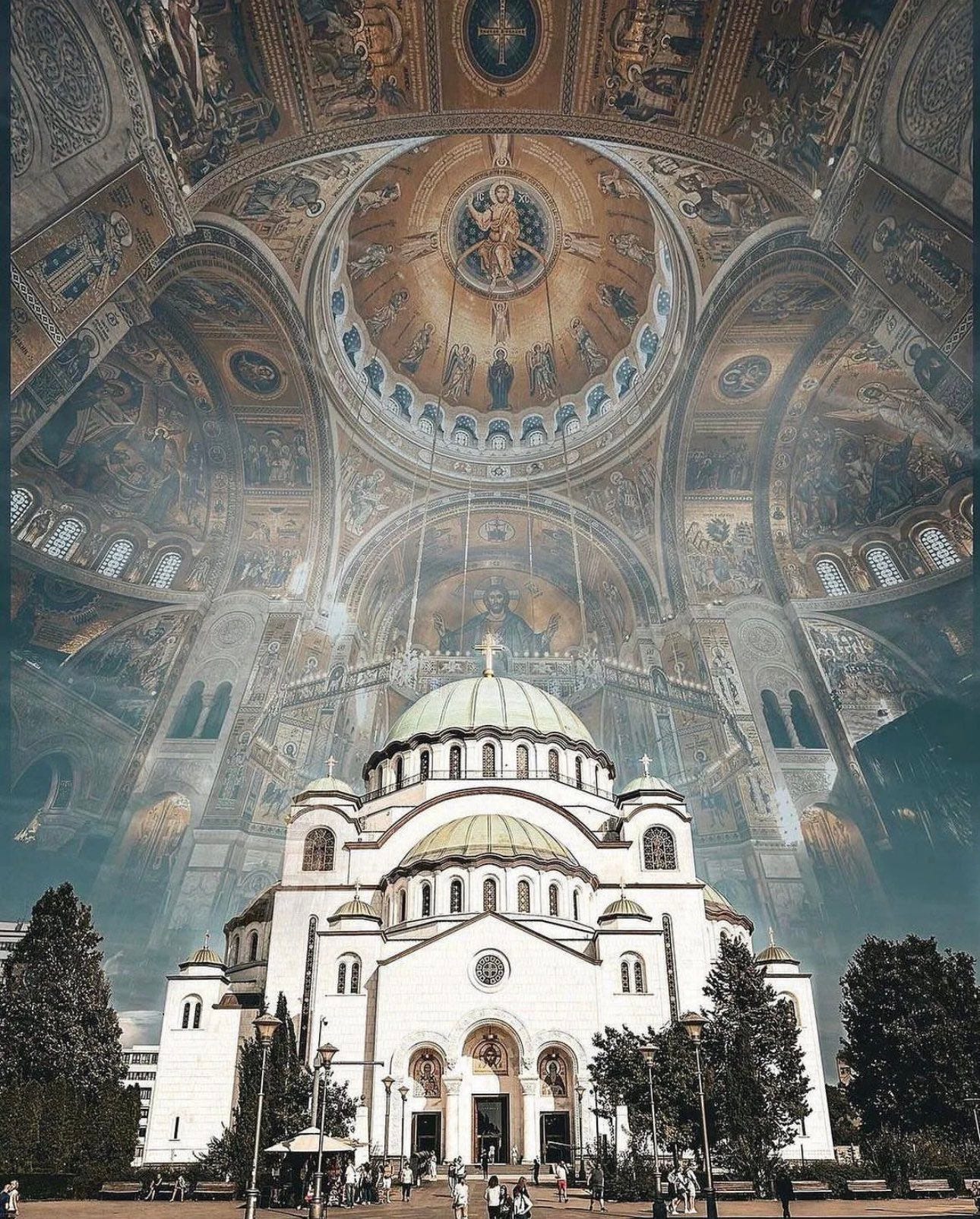
This is because the patterns which manifest themselves within space-time during the liturgy are eternal patterns that are taking place at the end of time. We see this in the Book of Revelation, where St. John the Evangelist sees the heavenly liturgy taking place: incense being offered, hymns being sung, and countless worshipers bowing down before the throne of God. By entering into this virtuous mode of behavior, we are joining those at very top of the time-cone.
The Church (with a capital “C”) is a teleological object. Every individual Orthodox church you go to is a representation of the heavenly Church which transcends space and time.
If you don’t believe me, attend the midnight Pascha service after 40 days of fasting for Lent. You will notice that your perception of time changes; the Resurrection of Christ 2000 years ago feels like it just happened right in front of you.
Resurrection: Eternity and the End of Time
We’ve gotten pretty abstract, so enough rambling about time-cones and labyrinths.
You are probably asking: “What does this have to do with time traveling saints? How does compressing time in my mind allow me to time travel? This just sounds like basic pattern recognition. Stop LARPing.”
I’ve got some disappointing news for you: the best we can do in our present state is alter our perception of time so we can noetically experience eternity and have control over larger swaths of time. But in order to unlock your full time-traveling potential and do this physically, you’re gonna have to die first.
No fun, I know.
Why does it have to be this way?
As a result of the Fall from Paradise, we human beings have acquired what is referred to as the Garments of Skin (Genesis 3:21). This is the “body of death” that St. Paul refers to, it is our ever-dying animal bodies. These bodies are subject to material constraints and are stuck at the bottom of the time-cone.
I am not making the gnostic argument that the physical body is bad or evil, I am saying that it has been corrupted and weighed down. Our bodies have become defective due to our misuse of them; they are unable to perform the incomprehensible supernatural abilities that God designed them for.
But the good news is that the incarnation, death, and resurrection of Christ has given us a way back to our former glory. Christ has turned death into a gateway to obtaining a resurrected body that is fully functioning. Just like how we go to sleep to restore our bodies, when we enter the final sleep of death our physical bodies will be fully restored by God.
Most assuredly, I say to you, unless a grain of wheat falls into the ground and dies, it remains alone; but if it dies, it produces much grain. He who loves his life will lose it, and he who hates his life in this world will keep it for eternal life.
- John 12:24-25
We will be exchanging our corrupted Garments of Skin for pure Garments of Light. Time and space will no longer be constraints by which our coarse bodies are bound, they will become merely mediums through which we manifest ourselves.
“They [the saints and angels] occupy a definite space, but when they are enjoined to do so or are permitted, they are immediately transferred to wherever it is necessary by means of the element [aether], and not only do they meet no obstacles, they do not even see them. When necessary, they are transferred, but when it is not necessary, they stay in their own space and see in every direction what is there and what is happening there. When their eyes turn toward earth, that is, toward us sinners, they see us clearly too. Not our coarse bodies, because that is not how they see us. Rather, they see our very souls, as they are. They do not see directly, but by means of the soul’s covering, which is like their own, and like the element in which they live, because the state of the soul is accurately reflected by its covering.”
- St. Theophan the Recluse
So we have to wait until the resurrection of the dead at the end of time?
Yes and no.
In the Book of Revelation, there are actually two general resurrections that take place. The first resurrection is for the saints:
Blessed and holy is he that hath part in the first resurrection: on such the second death hath no power, but they shall be priests of God and of Christ, and shall reign with him a thousand years.
- Revelation 20:6
After the metaphorical 1000 year reign, which is taking place right now, Satan is loosened and then cast into the Lake of Fire. Then the second resurrection happens for everyone else:
And I saw the dead, small and great, stand before God; and the books were opened: and another book was opened, which is the book of life: and the dead were judged out of those things which were written in the books, according to their works.
And the sea gave up the dead which were in it; and death and hell delivered up the dead which were in them: and they were judged every man according to their works.
And death and hell were cast into the lake of fire. This is the second death.
And whosoever was not found written in the book of life was cast into the lake of fire.
So what gives here? Why are there two resurrections? And why does one happen way sooner than the other?
It is because the first resurrection has already happened.
Christ is the “firstborn of the dead.” His resurrection is an eternal event. Those who eat His Body and drink His Blood become one with Him. Because of this, they will share in His resurrection which has already happened. We even see this happen in the Bible immediately after Christ’s death on the Cross:
And Jesus cried out again with a loud voice and yielded up his spirit.
And behold, the curtain of the temple was torn in two, from top to bottom. And the earth shook, and the rocks were split. The tombs also were opened. And many bodies of the saints who had fallen asleep were raised, and coming out of the tombs after his resurrection they went into the holy city and appeared to many.
- Matthew 27:50-53
This finally answers my initial question of “how can the saints be seen in their resurrected bodies while their dead bodies are still on earth?”
Like I said previously, the beginning and end of something are intertwined. The beginning of your death and the end of time when the resurrection happens are one event.
The point at the top of a cone is connected to every single point along the bottom of the cone’s circumference.
Likewise, eternity is the totality of all time; once we physically reach eternity, all of time opens up to us. Once we obtain eternal life, everything between our physical death and the end of time becomes a venue for us to operate within.
Conclusion
This article ended up way longer than I initially planned; I hope I didn’t get too lost in the weeds here and confuse everyone.
The reason why I went into such technical depth here is because I think we have greatly lost the plot of Christianity within the modern West. By re-framing the plot, I hope to recapture it in our minds.
Becoming a Christian isn’t just about being a goodie two-shoes and not going to hell, it is about being restored to our original godlike image.
Heaven and eternal life doesn’t mean we are merely attending church services forever and worshiping God for an indefinite amount of time, it means that we become co-rulers with God and transcend space and time.
The stakes are much higher than we think, the rewards even more so.
At the time of me writing this, we are one week away from celebrating Pascha (Easter). Let us glorify God by trying our best to truly comprehend the incredible gifts our Savior has given us through His death and resurrection.





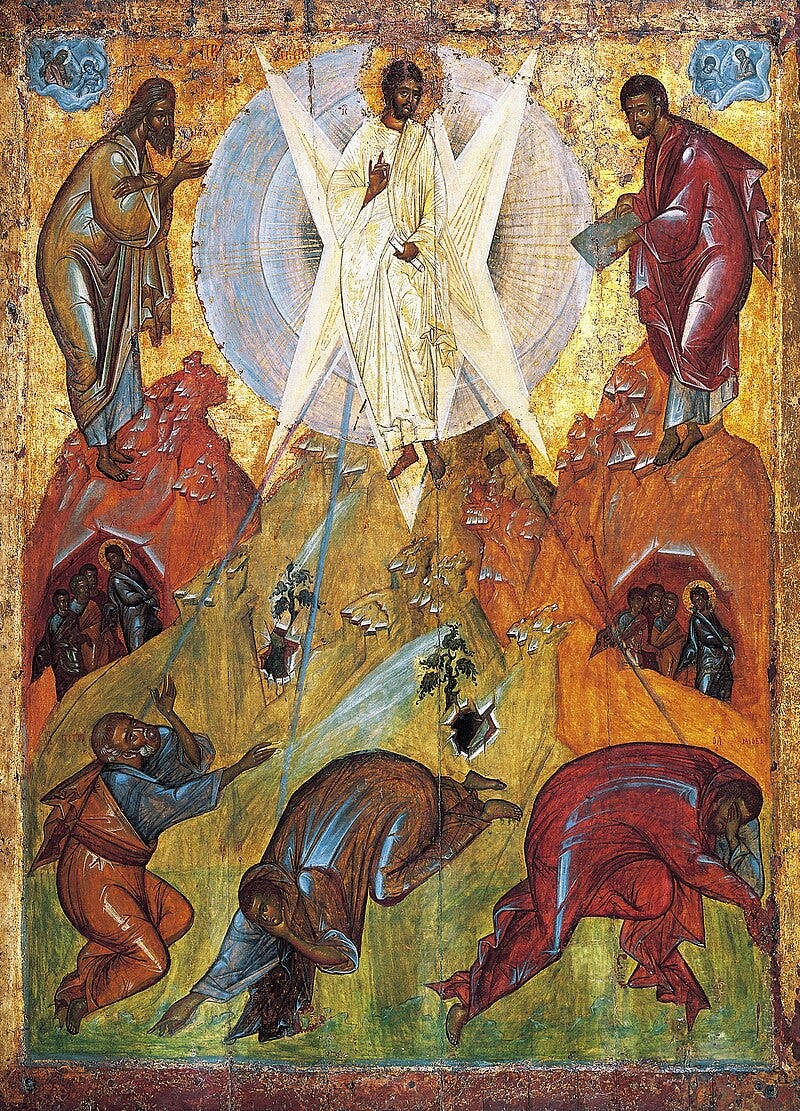
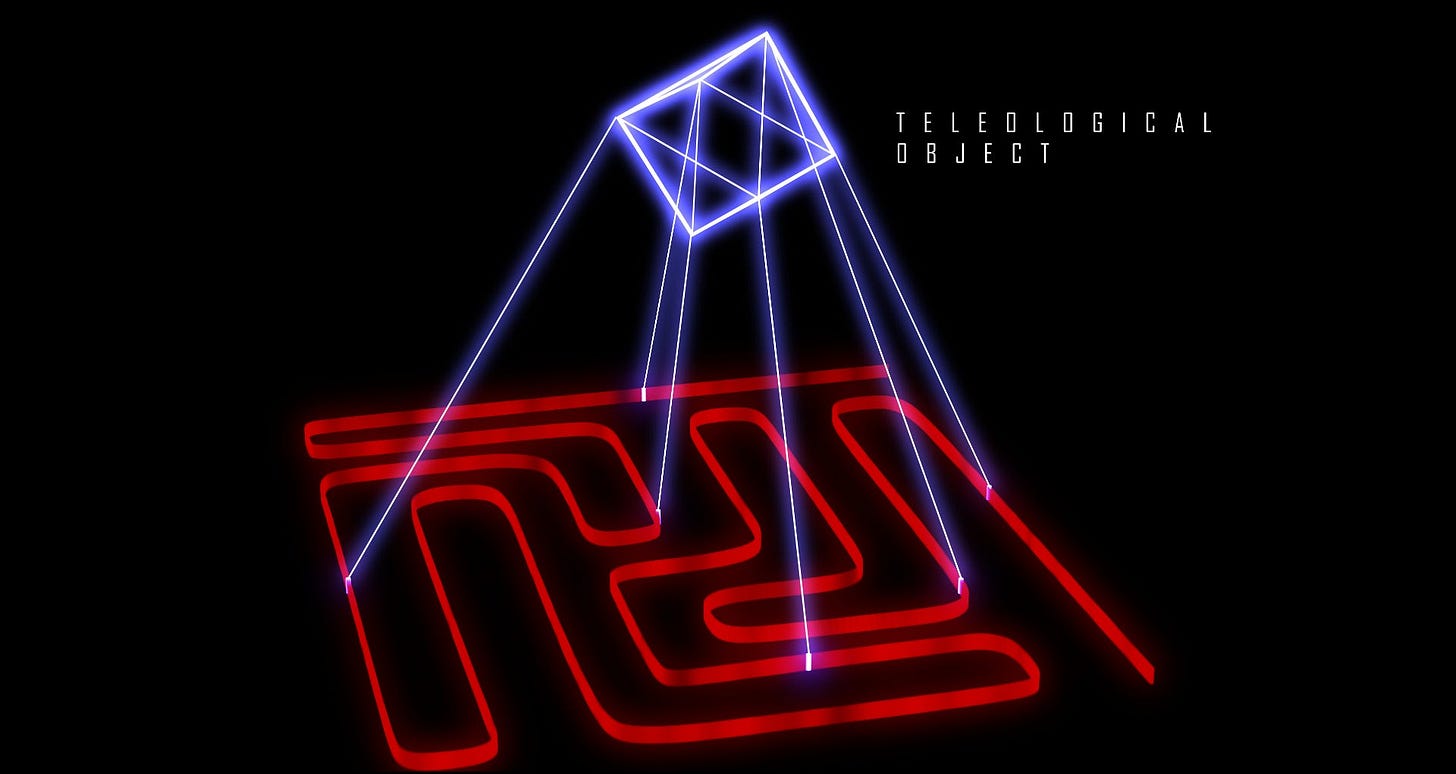

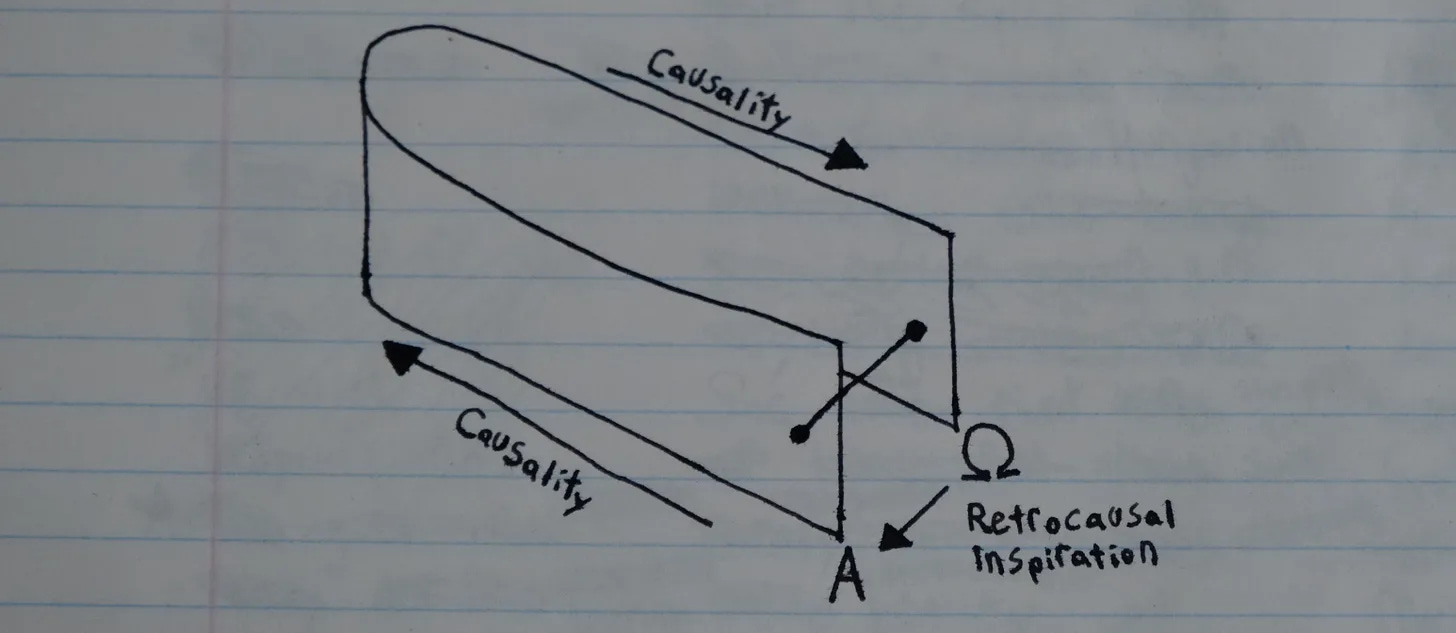




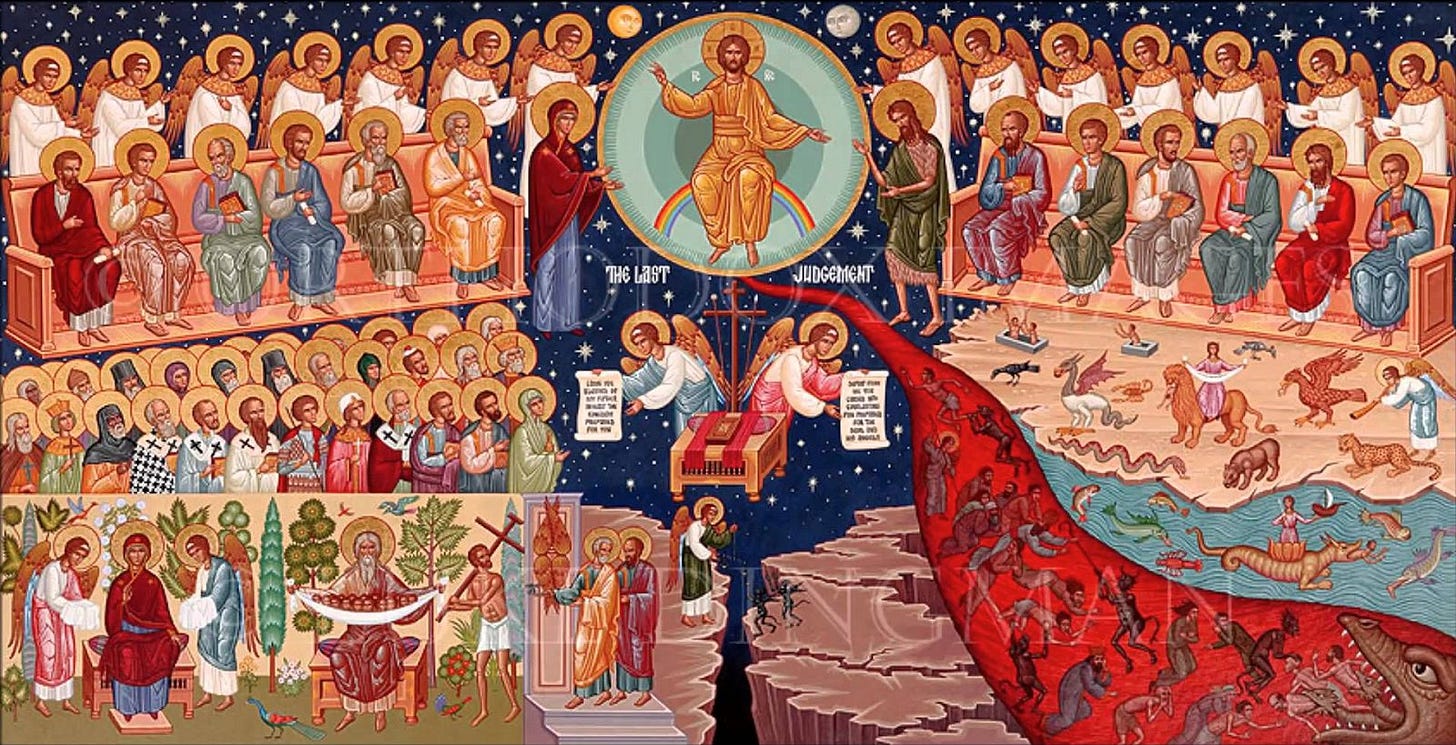

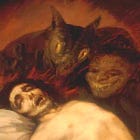
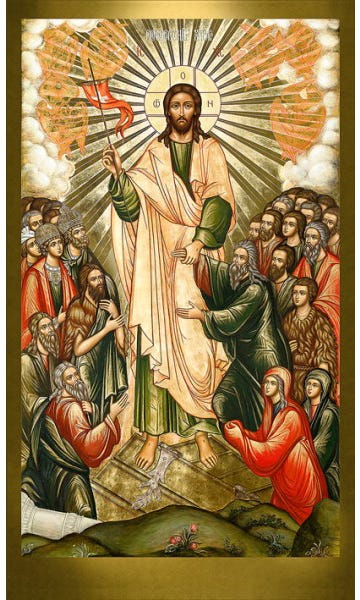
Saint Menas, pray for us! 🌍🐪⚔️🛡️
Really good work and great timing